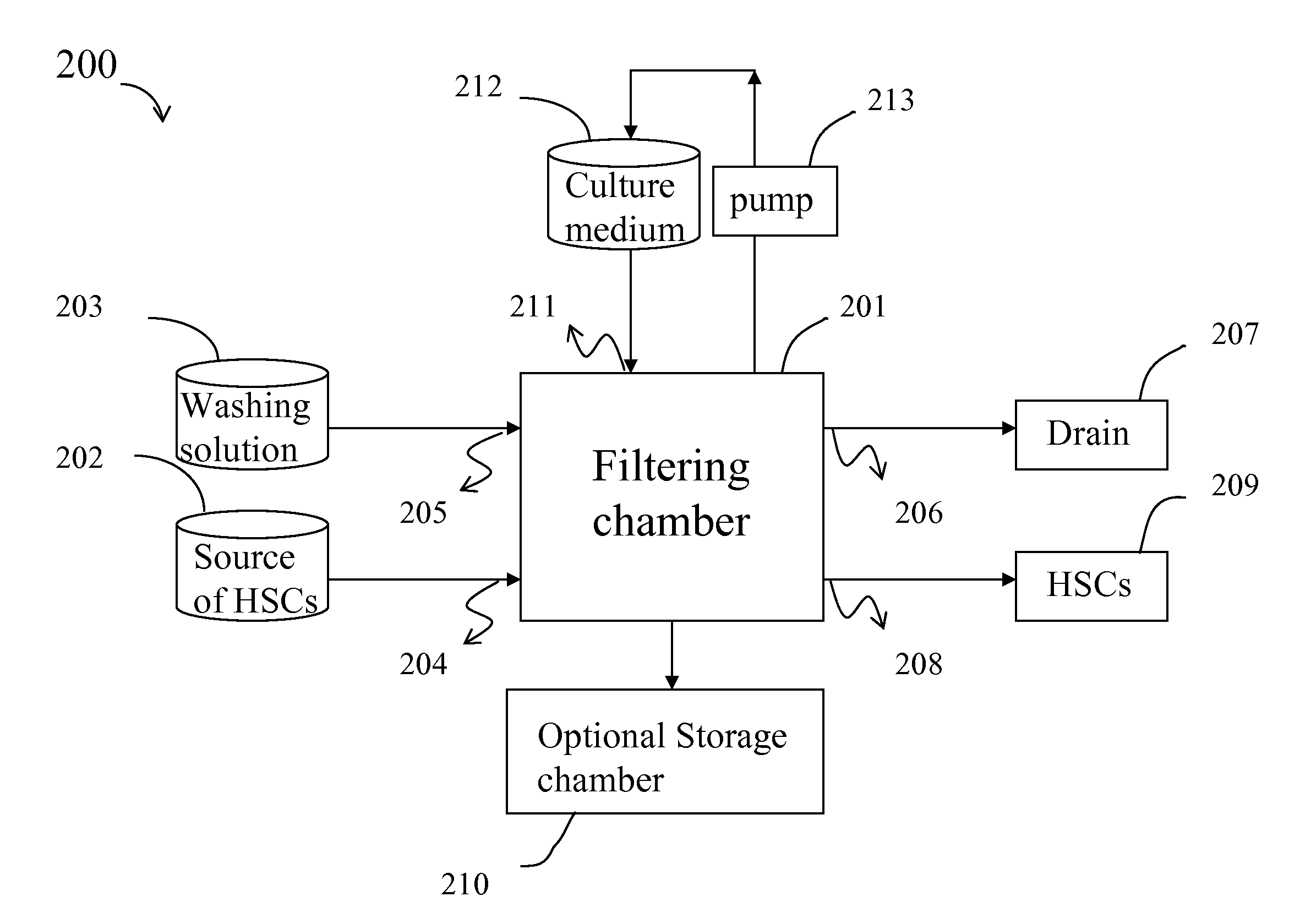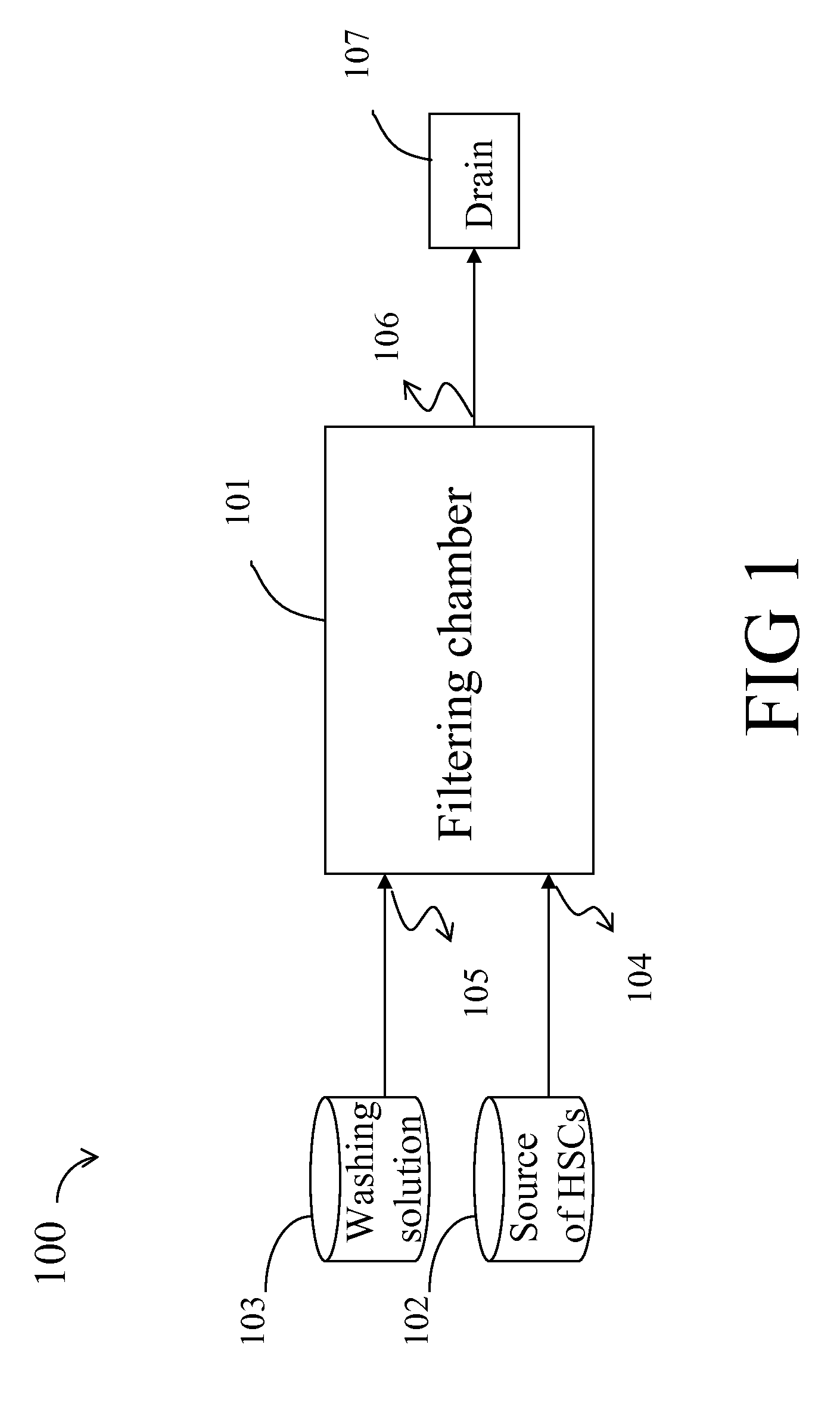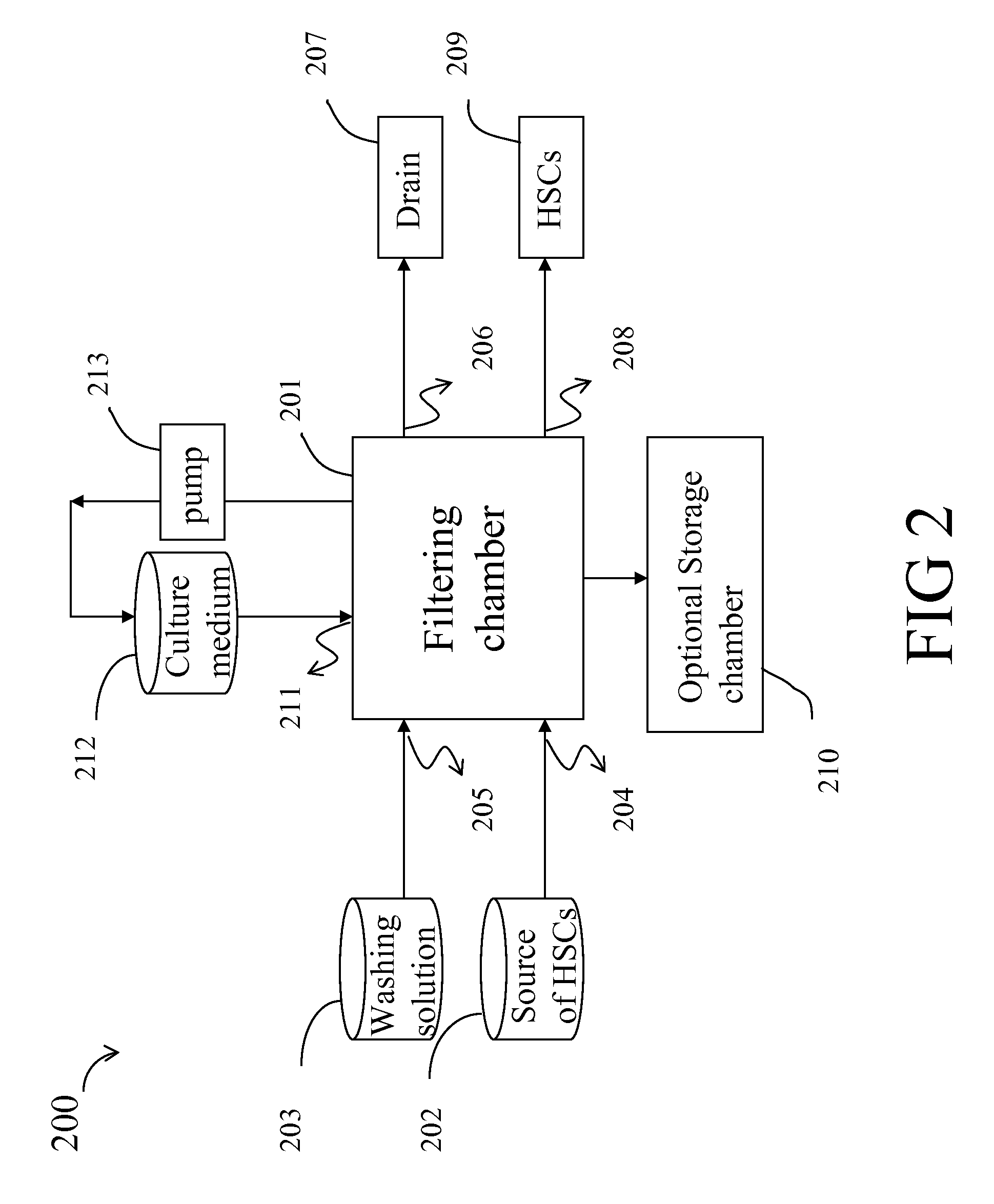Methods and Systems for Isolating, Ex Vivo Expanding and Harvesting Hematopoietic Stem Cells
a technology of hematopoietic stem cells and ex vivo expansion, applied in the field of methods and systems for isolating, ex vivo expanding and harvesting hematopoietic stem cells, can solve the problems of low yield, prone to contamination by bacteria or fungi, and controversial use of embryonic stem cells in the treatment of diseases, etc., to achieve the effect of convenient us
- Summary
- Abstract
- Description
- Claims
- Application Information
AI Technical Summary
Benefits of technology
Problems solved by technology
Method used
Image
Examples
example 1
Preparation of Surface Modified PU Membrane
[0057]1.1 Preparation of PU-GMA membrane
[0058]PU-GMA membranes were prepared by a plasma discharge method described in Example 1 of a prior publication, JP 2005-323534, which is hereby incorporated by reference in its entirety. Briefly, a polyurethane membrane, such as the one taken from a leukocyte removal filter (Imguard III-RC, Terumo Corporation) is used in this example. Glycidyl methacrylate (GMA) was grafted onto the surface of the PU membrane in a reaction vessel with the aid of Ar plasma. The Ar plasma was generated by applying a high frequency power (˜200 Watts) (Adtec Co., AX-300) to a flow of Ar gas (at a pressure of about 26.6 Pa) in the reaction vessel for about 30 sec, and graft polymerization between GMA and the PU membrane was then performed in the reaction vessel for 5 min at a pressure of about 0.65 Pa. Subsequently, the PU membranes grafted with GMA was washed with mixed solution of water and methanol (1:1 volume ratio) u...
example 2
A Batch System for Isolating, Ex Vivo Expanding and Harvesting Hematopoietic Stem Cells
[0059]Umbilical cord blood was obtained from pregnant women with written informed consent. The cord blood was collected in a blood bag (CPDA-1 Termo Co.) containing anticoagulants such as citric acid, dextrose etc. A filtering device was constructed by fitting 3 sheets of PU—COOH membranes of example 1.2 onto a filter holder (25 mm in membrane diameter, Millipore Co.). 6 ml of umbilical cord blood was then permeated through the filtering device at a flow rate of 1 ml / min. Washing solution (6 ml) was then permeated through the filtering device at 1 ml / min for 6 min. Plasma A or StemSpam SFEM medium was used as a washing solution. Plasma A was prepared as follows: platelet-poor plasma was obtained by centrifuging umbilical cord blood at a speed of 1,800 rpm, and then filtered through a 0.22 μm disposable filter (Millex GS, Millipore Co.) to remove blood cells completely (Plasma A). StemSpam SFEM med...
example 3
Hematopoietic Stem Cells that were Isolated, Expanded and Harvested by the Batch System of Example 2
[0062]Hematopoietic stem cells were isolated, expanded ex vivo and harvested in accordance with the procedures described in Example 2, except 1 ml of umbilical cord blood was used instead of 6 ml of umbilical cord blood, and culture medium (i.e., HSC medium A) was and was not exchanged on day 5 after cell culture started. Plasma A was used as a washing solution in this experiment. Results are presented in Table 2, and an expansion ratio about 2.7-6.2 folds (as compared with control) is obtained for stems cells isolated and expanded in accordance with the method described in this example.
[0063]The operating time of the whole procedures from permeation of umbilical cord blood through the membranes to the inoculation of hematopoietic stem cells to culture dishes was less 15 min and is found to be very short.
TABLE 2Ex vivo expansion ratio (EVER) of CD34+ hematopoieticstem cells by use of...
PUM
| Property | Measurement | Unit |
|---|---|---|
| pore size | aaaaa | aaaaa |
| operating time | aaaaa | aaaaa |
| time | aaaaa | aaaaa |
Abstract
Description
Claims
Application Information
 Login to View More
Login to View More - R&D
- Intellectual Property
- Life Sciences
- Materials
- Tech Scout
- Unparalleled Data Quality
- Higher Quality Content
- 60% Fewer Hallucinations
Browse by: Latest US Patents, China's latest patents, Technical Efficacy Thesaurus, Application Domain, Technology Topic, Popular Technical Reports.
© 2025 PatSnap. All rights reserved.Legal|Privacy policy|Modern Slavery Act Transparency Statement|Sitemap|About US| Contact US: help@patsnap.com



